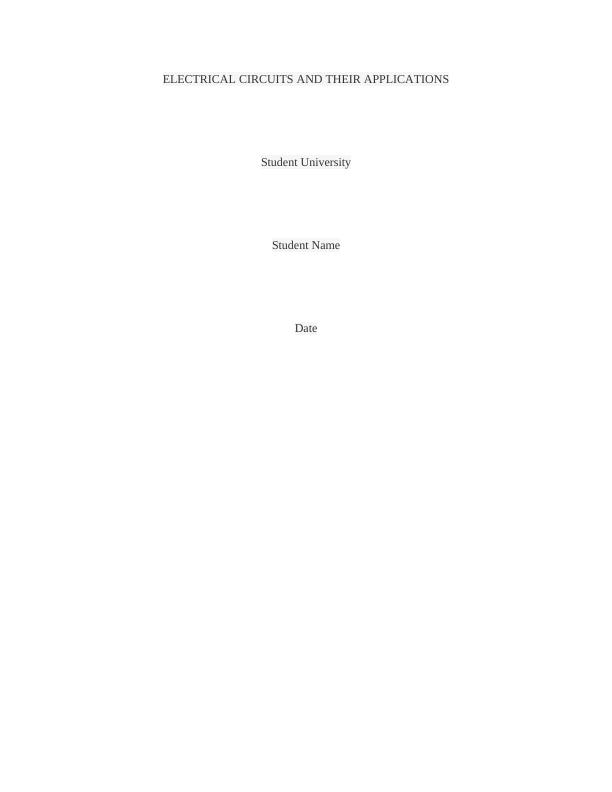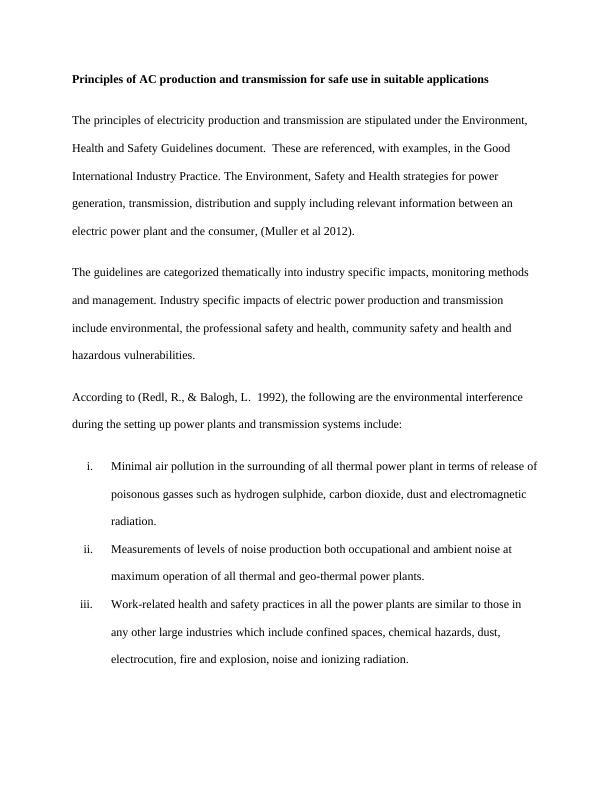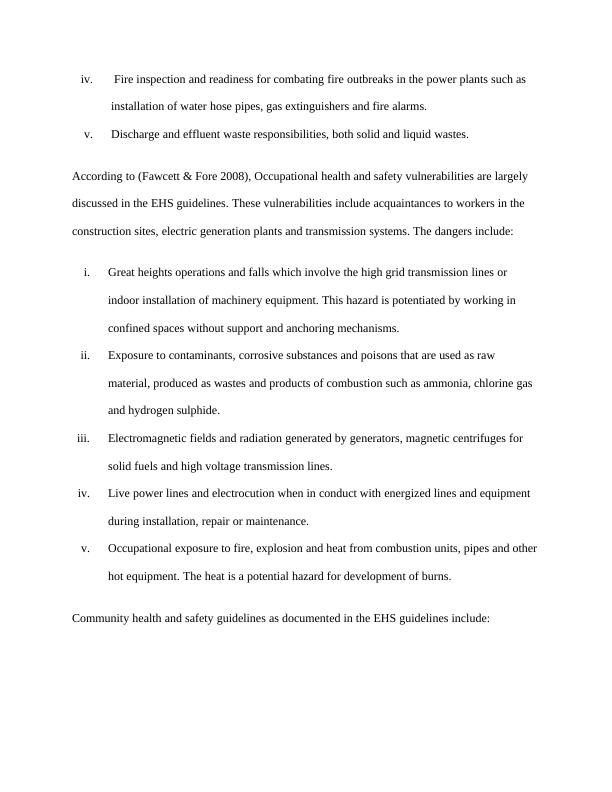Electrical Circuits and Applications
12 Pages2142 Words88 Views
Added on 2021-04-16
Electrical Circuits and Applications
Added on 2021-04-16
ShareRelated Documents
ELECTRICAL CIRCUITS AND THEIR APPLICATIONSStudent UniversityStudent NameDate

Principles of AC production and transmission for safe use in suitable applicationsThe principles of electricity production and transmission are stipulated under the Environment, Health and Safety Guidelines document. These are referenced, with examples, in the Good International Industry Practice. The Environment, Safety and Health strategies for power generation, transmission, distribution and supply including relevant information between an electric power plant and the consumer, (Muller et al 2012). The guidelines are categorized thematically into industry specific impacts, monitoring methods and management. Industry specific impacts of electric power production and transmission include environmental, the professional safety and health, community safety and health and hazardous vulnerabilities. According to (Redl, R., & Balogh, L. 1992), the following are the environmental interference during the setting up power plants and transmission systems include:i.Minimal air pollution in the surrounding of all thermal power plant in terms of release ofpoisonous gasses such as hydrogen sulphide, carbon dioxide, dust and electromagnetic radiation. ii.Measurements of levels of noise production both occupational and ambient noise at maximum operation of all thermal and geo-thermal power plants. iii.Work-related health and safety practices in all the power plants are similar to those in any other large industries which include confined spaces, chemical hazards, dust, electrocution, fire and explosion, noise and ionizing radiation.

iv. Fire inspection and readiness for combating fire outbreaks in the power plants such as installation of water hose pipes, gas extinguishers and fire alarms. v.Discharge and effluent waste responsibilities, both solid and liquid wastes.According to (Fawcett & Fore 2008), Occupational health and safety vulnerabilities are largely discussed in the EHS guidelines. These vulnerabilities include acquaintances to workers in the construction sites, electric generation plants and transmission systems. The dangers include:i.Great heights operations and falls which involve the high grid transmission lines or indoor installation of machinery equipment. This hazard is potentiated by working in confined spaces without support and anchoring mechanisms. ii.Exposure to contaminants, corrosive substances and poisons that are used as raw material, produced as wastes and products of combustion such as ammonia, chlorine gas and hydrogen sulphide. iii.Electromagnetic fields and radiation generated by generators, magnetic centrifuges for solid fuels and high voltage transmission lines. iv.Live power lines and electrocution when in conduct with energized lines and equipment during installation, repair or maintenance. v.Occupational exposure to fire, explosion and heat from combustion units, pipes and otherhot equipment. The heat is a potential hazard for development of burns.Community health and safety guidelines as documented in the EHS guidelines include:

i.Noise and air pollution during maximum operations of the power plants and its effects onthe surrounding community in interfering normal life activities such as schools and learning, work and sleep. ii.Electrocution due to conduct with live energized electrical equipment and power lines by the public. iii.Electromagnetic interference and non-ionizing radiations emitted from the power plant ortransmission system.iv.Aircraft navigation interference in cases where transmission power towers are situated near airstrips, airports or known flight ways. They can interfere through physical impact and collisions or radar interference. v.Social concerns from the members of the community such as noise, traffic safety due to increase in traffic volume, socio-economic constraints such as bias in recruitment activities and degradation of moral values caused by expatriates working at the power.Power produced by the power plants is distributed to consumers for use. The appliances can be grouped into major appliances and small appliances. The home appliances use electronic circuits to convert the AC power to regular direct current. The power generated must therefore be reliable and above all, safe. In most developed countries, the power delivered is 240volts in 50/60 hertz. The principles of safety use are based on Ohm’s law of electricity. This is applicable from the physiology from a statement that “its current that kills not voltage.” Considering ohm’s law for voltage, current and resistance, the relationship I=V/R is generated. Where I is current is voltage and R is the body’s resistance. Therefore, the higher the amount of voltage, the higher current

End of preview
Want to access all the pages? Upload your documents or become a member.
